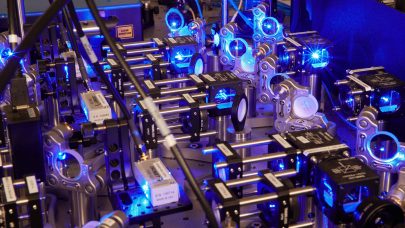
Nvidia Showcases Quantum Cloud, Expanding Quantum Portfolio at GTC24
March 18, 2024
Nvidia’s barrage of quantum news at GTC24 this week includes new products, signature collaborations, and a new Nvidia Quantum Cloud for quantum developers. Wh Read more…

PASQAL Issues Roadmap to 10,000 Qubits in 2026 and Fault Tolerance in 2028
March 13, 2024
Paris-based PASQAL, a developer of neutral atom-based quantum computers, yesterday issued a roadmap for delivering systems with 10,000 physical qubits in 2026 a Read more…

Atom Computing Reports Advance in Scaling Up Neutral Atom Qubit Arrays
February 15, 2024
The scale-up challenge facing quantum computing (QC) is daunting and varied. It’s commonly held that 1 million qubits (or more) will be needed to deliver prac Read more…

US Leads User Rush to Try China’s Quantum Computer
January 19, 2024
Global users have apparently rushed to try out Origin Wukong, “China’s top quantum computer,” which was opened to public access earlier this month. CGT Read more…

Trust Me, I’m Smart: HPC and Government Regulation in the Coming AI Age
January 17, 2024
Stephen Hawking famously said that "success in creating effective AI could be the biggest event in the history of our civilization, but unless we learn how to p Read more…

QuEra Debuts 3-Year Roadmap to 10,000 Physical and 100 Logical Qubits
January 9, 2024
QuEra Computing, the young quantum computing company leveraging neutral atom-based qubits, introduced a new expansive roadmap today that calls for delivering ev Read more…

Quantum 2023-24: Five Questions to Ponder, Five Actions to Take Next Year
January 3, 2024
What a year - two new ~1000-qubit QPUs; two public Q companies have faced delisting pressure. Seems like the same boom-bust enthusiasm cycle for quantum computi Read more…

What is a Cat Qubit and Why Should You Care? Ask Alice & Bob
August 1, 2023
Quantum computing is in the midst of the so-called NISQ era – a time of noisy intermediate scale quantum devices based a variety of qubit modalities, all of w Read more…

- Click Here for More Headlines

Whitepaper
Transforming Industrial and Automotive Manufacturing
In this era, expansion in digital infrastructure capacity is inevitable. Parallel to this, climate change consciousness is also rising, making sustainability a mandatory part of the organization’s functioning. As computing workloads such as AI and HPC continue to surge, so does the energy consumption, posing environmental woes. IT departments within organizations have a crucial role in combating this challenge. They can significantly drive sustainable practices by influencing newer technologies and process adoption that aid in mitigating the effects of climate change.
While buying more sustainable IT solutions is an option, partnering with IT solutions providers, such and Lenovo and Intel, who are committed to sustainability and aiding customers in executing sustainability strategies is likely to be more impactful.
Learn how Lenovo and Intel, through their partnership, are strongly positioned to address this need with their innovations driving energy efficiency and environmental stewardship.
Download Now
Sponsored by Lenovo
Whitepaper
How Direct Liquid Cooling Improves Data Center Energy Efficiency
Data centers are experiencing increasing power consumption, space constraints and cooling demands due to the unprecedented computing power required by today’s chips and servers. HVAC cooling systems consume approximately 40% of a data center’s electricity. These systems traditionally use air conditioning, air handling and fans to cool the data center facility and IT equipment, ultimately resulting in high energy consumption and high carbon emissions. Data centers are moving to direct liquid cooled (DLC) systems to improve cooling efficiency thus lowering their PUE, operating expenses (OPEX) and carbon footprint.
This paper describes how CoolIT Systems (CoolIT) meets the need for improved energy efficiency in data centers and includes case studies that show how CoolIT’s DLC solutions improve energy efficiency, increase rack density, lower OPEX, and enable sustainability programs. CoolIT is the global market and innovation leader in scalable DLC solutions for the world’s most demanding computing environments. CoolIT’s end-to-end solutions meet the rising demand in cooling and the rising demand for energy efficiency.
Download Now
Sponsored by CoolIT
Advanced Scale Career Development & Workforce Enhancement Center
Featured Advanced Scale Jobs:
HPCwire Resource Library
HPCwire Product Showcase
© 2024 HPCwire. All Rights Reserved. A Tabor Communications Publication
HPCwire is a registered trademark of Tabor Communications, Inc. Use of this site is governed by our Terms of Use and Privacy Policy.
Reproduction in whole or in part in any form or medium without express written permission of Tabor Communications, Inc. is prohibited.
























